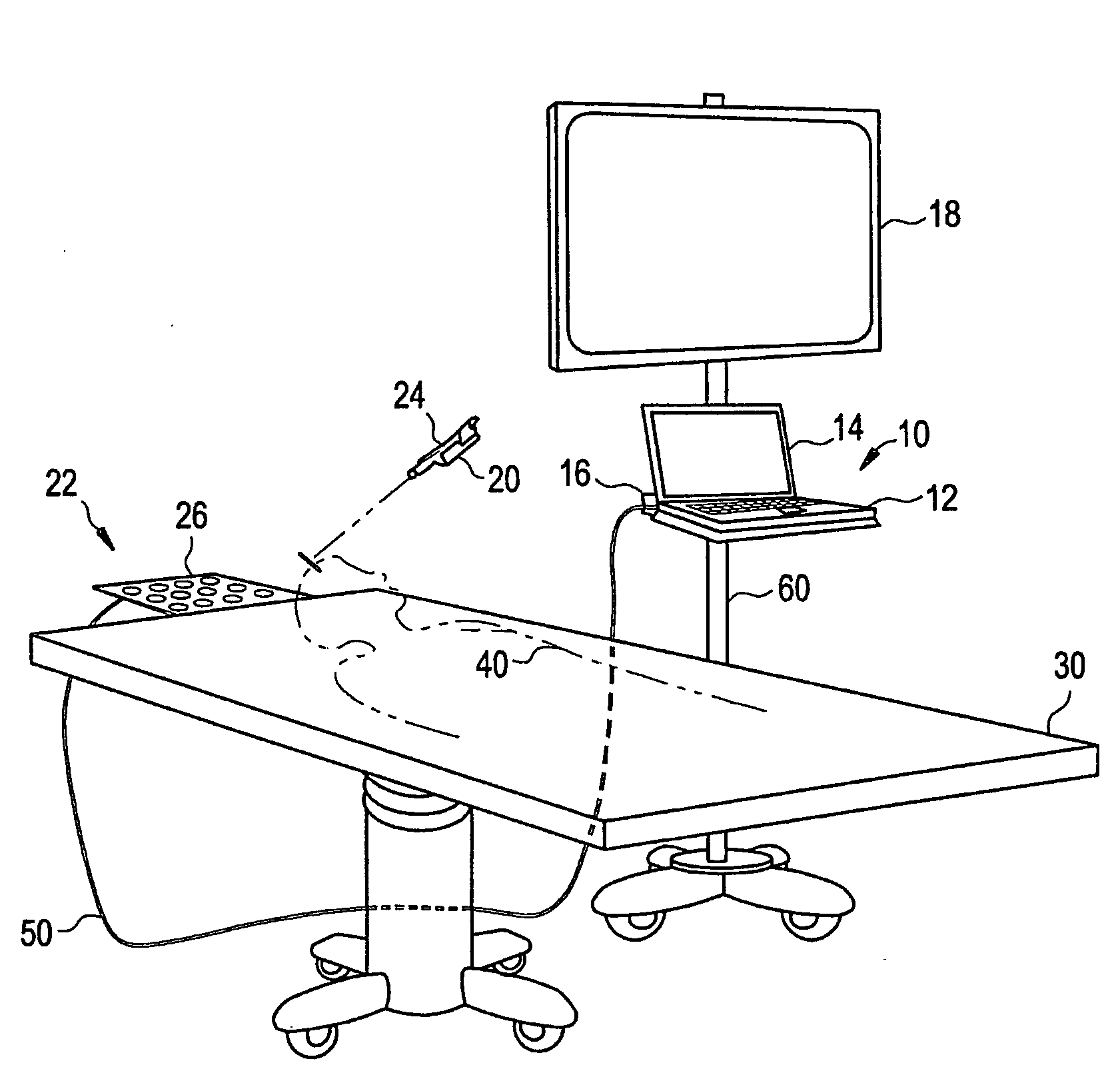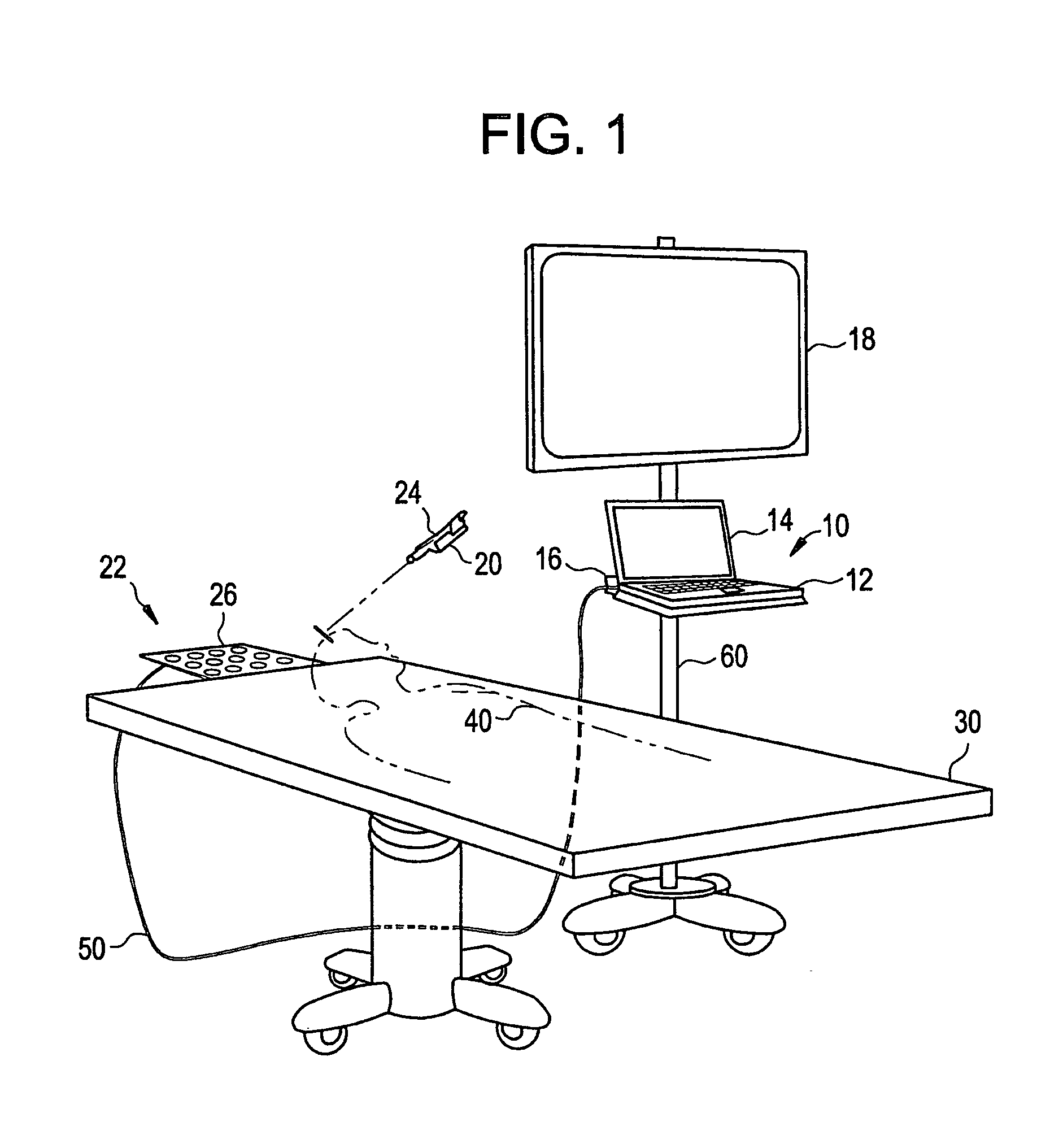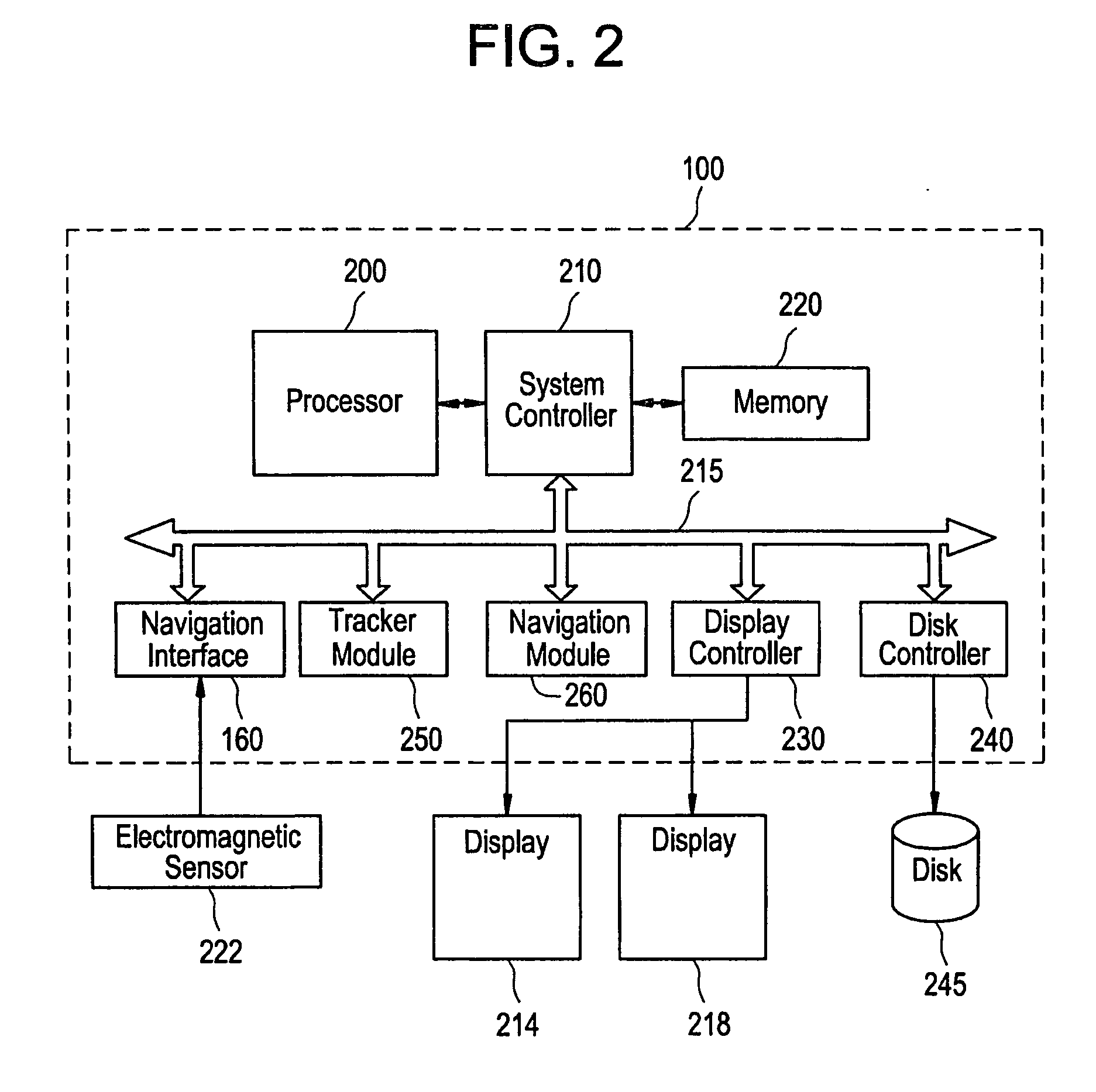Systems and methods for annotation and sorting of surgical images
- Summary
- Abstract
- Description
- Claims
- Application Information
AI Technical Summary
Benefits of technology
Problems solved by technology
Method used
Image
Examples
Embodiment Construction
[0035]Referring now to FIG. 1, a medical navigation system (e.g., a surgical navigation system), designated generally by reference numeral 10, is illustrated as including a portable computer 12, a display 14, and a navigation interface 16. The medical navigation system 10 is configured to operate with an electromagnetic field generator 20 and electromagnetic sensor 22 to determine the location of a device 24. Although the system 10 and / or other navigation or tracking system may be used in conjunction with a variety of tracking technologies, including electromagnetic, optical, ultrasound, inertial position and / or other tracking systems, for example, the system 10 is described below with respect to electromagnetic tracking for purposes of illustration only.
[0036]A table 30 is positioned near the electromagnetic sensor 22 to support a patient 40 during a surgical procedure. A cable 50 is provided for the transmission of data between, the electromagnetic sensor 22 and the medical naviga...
PUM
 Login to View More
Login to View More Abstract
Description
Claims
Application Information
 Login to View More
Login to View More - R&D
- Intellectual Property
- Life Sciences
- Materials
- Tech Scout
- Unparalleled Data Quality
- Higher Quality Content
- 60% Fewer Hallucinations
Browse by: Latest US Patents, China's latest patents, Technical Efficacy Thesaurus, Application Domain, Technology Topic, Popular Technical Reports.
© 2025 PatSnap. All rights reserved.Legal|Privacy policy|Modern Slavery Act Transparency Statement|Sitemap|About US| Contact US: help@patsnap.com



